Listen to the drip-drops of snow melting and feel the warmth of the sun as the days lengthen in the Keweenaw. Spring is a special time of year here. While this is often an overlooked season for travelers, it’s a time of year that locals cherish and look forward to. This magical time of year brings with it unique experiences and a feeling of rejuvenation. Pack your rainboots and get ready to explore Mother Nature as she basks in springtime glory. Here's our official guide to enjoying spring in the Keweenaw. This guide includes local tips on foraging, spring events, and outdoor recreational opportunities.
When is Spring in the Keweenaw?
Spring comes in stages here. One day you step outside without mittens, the next without your hat. Sooner or later, you realize that you haven't used your shovel for a while. As snowbanks start to recede with warmer temps, it can be a great time to get outside!
We typically begin seeing these first signs of spring during the month of March (specifically mid to late March). Perhaps some mark the start of spring by the official closure of our state-designated snowmobile trails on March 31st. The landscape and environment will continue to transform as spring progresses through the month of May.
Be on the Lookout for Springtime Flowers
A telltale sign of spring in the Keweenaw is seeing flowers. One of the first flowers we see during the spring is commonly known as "Glory-of-the-Snow" because they often start to bloom while there is still snow on the ground. These delicate star-shaped flowers spread across lawns, creating a dreamy blue carpet of springtime magic. The Crocus is another early spring flower that can literally emerge from snow. These early spring bloomers come in yellow, white, and various shades of purple.

"Glory-of-the-Snow" will often begin blooming when there is still snow on the ground.
As spring continues, we begin to see many other varieties of flowers, including Grape Hyacinth, Lily of the Valley, Trillium, Daffodils, Trout Lily, and a variety of tulips. If you're a tulip lover, a late spring trip may be for you. Tulips begin emerging in our communities around the beginning of May and typically are in full bloom by the end of May. Downtown Calumet has a beautiful community garden with 16 raised garden beds that are filled with a variety of tulip bulbs before winter. Towards the end of May these blooming garden beds are a spectacular sight to see.
Experience the Spring Bird Migration
As the dormant trees begin to bud, we start seeing some of our favorite feathered friends again. Some say it's a sign of good luck when you see your first Robin of the season. As many species of birds return to "summer" on the Keweenaw, we also see migrating birds by the thousands as they pass over the Keweenaw on their spring flight to northern nesting areas in Canada.

A Golden Eagle perches on a dead tree.
Watch as a variety of hawks, falcons, turkey vultures, owls, and eagles fly over Cliff Drive and Brockway Mountain during the spring migration. Grab your binoculars and enjoy a drink on the porch of the Cliff View Inn (expected to reopen Spring 2024!) as you watch these massive birds swarm along the cliff ridge.
Alternatively, head north to the Brockway Mountain Audubon Wildlife Sanctuary and hike the .75 mile long Oren Krumm Trail for high elevation views of the bird migration. Raptors passing by the mountain are often flying at eye level! Each year, the Keweenaw Bird Research Group does a study to gather spring migration data of birds of prey in the Lake Superior region. Chances are, you will see Bob Baez on top of the mountain counting raptors as part of the Brockway Mountain Hawk Watch. For more information about how to watch the spring bird migration, read our blog about it!
Reminder: Brockway Mountain Drive closes to vehicular traffic for the winter and reopens during the spring. Check with us before you go to ensure that it has been reopened for the season.
Waterfalls
The Keweenaw receives a lot of snowfall during the winter months. In the spring, those piles of snow melt rapidly, recharging our rivers, streams, and tributaries. From mid-March to late April, your favorite Keweenaw waterfalls will ROAR to life.
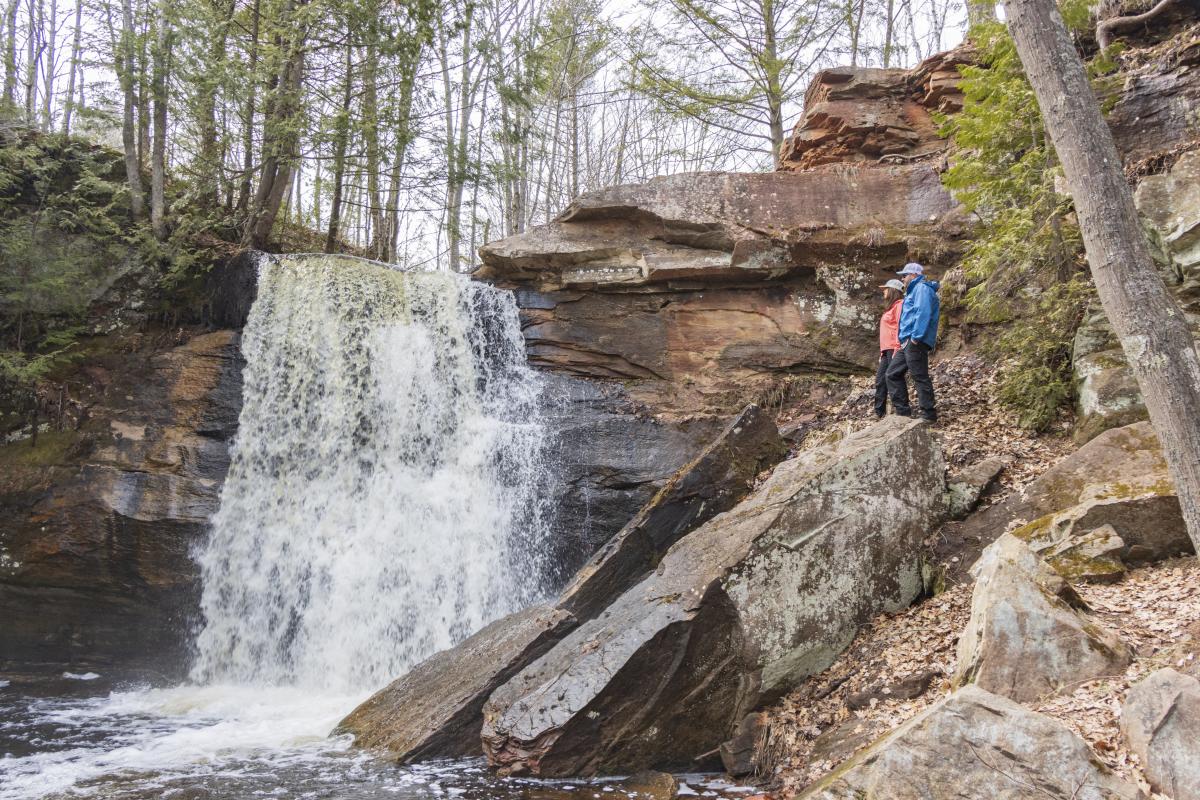
Spring is the best time to view waterfalls, thanks to the rapidly melting snow.
Take a hike to view six to seven drops of the Hungarian Falls or enjoy views of easy-to-access roadside falls like Eagle River Falls or Jacob's Falls. Once you make it to the waterfall, stop and listen as the roaring water rumbles and burbles over ancient basalt rock formations and watch for spectacular rainbows created by the waterfall's spray.
Hike Keweenaw Forests
Grab your hiking stick and venture into the into vast Keweenaw forest. Enjoy the earthy scent of spring, easily traverse areas that are often overgrown by summer, and discover new forest growth before the mosquitoes and blackflies hatch in early summer. Be on the lookout for fascinating fungi, spring plants, and new vibrant green growth on our coniferous trees.
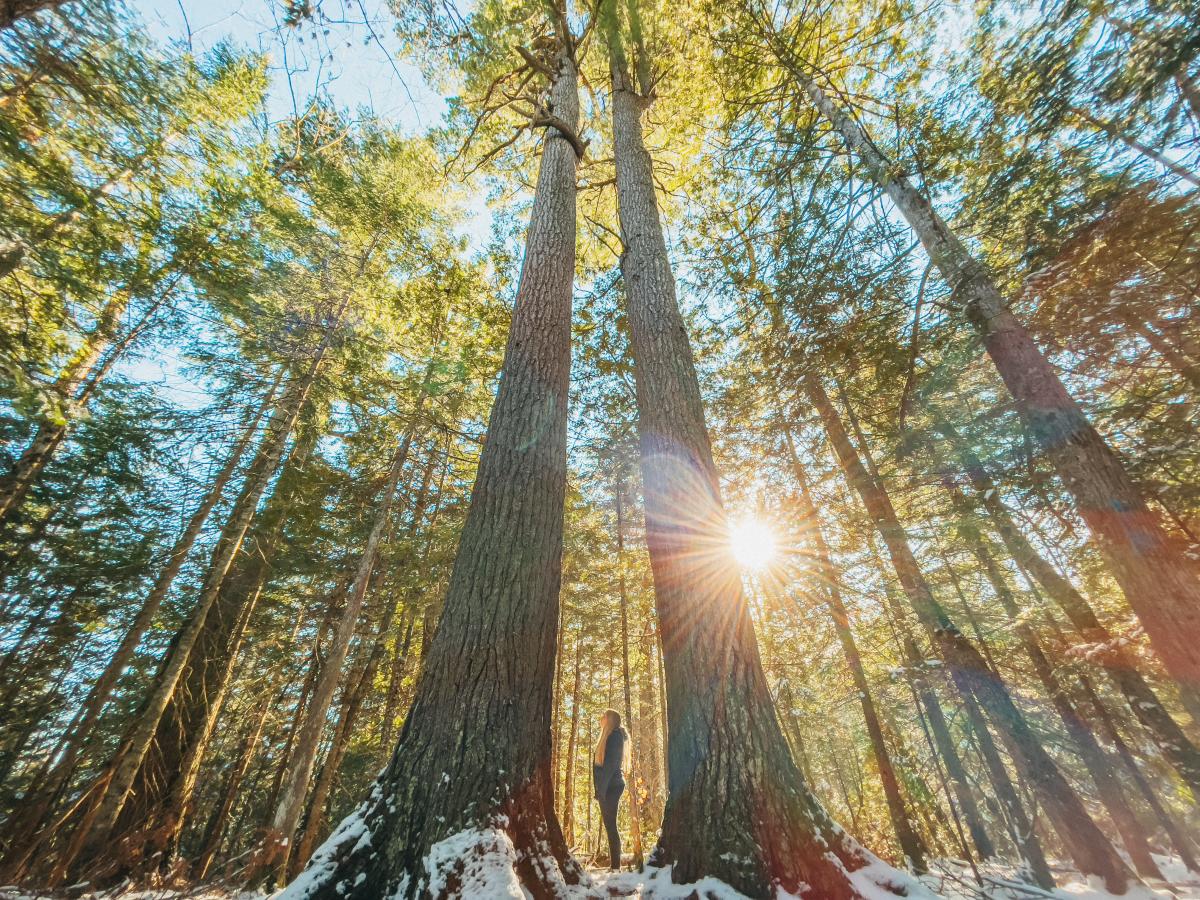
Hike Keweenaw forests before the bugs hatch and see the new growth of our conifers.
While we love all our Keweenaw hikes equally, there are a few that are extra special during the spring. Explore the easy to traverse Gardener's Creek Trail in Calumet and see the creek in flow thanks to the spring melt. By summer, this creek has usually dried up entirely, making spring the best time to experience this trail. Listen for Pileated Woodpeckers and keep your eyes open for Chipmunks, Squirrels, and even the occasional Garter Snake (friendly snakes). Just across the street from Gardener's Creek Trail is Calumet Waterworks Park. The beach at Calumet Waterworks is the perfect spot to enjoy a Lake Superior sunset or do a little springtime rock picking.

Calumet Waterworks Beach is a hop and a skip from Gardener's Creek Trail and provides epic sunsets and great rockpicking.
Alternatively, head to the Sturgeon River Sloughs Wildlife Area just south of Chassell. A 1-mile loop trail takes hikers around wetlands fed by the Sturgeon River and provides excellent birdwatching opportunities. The lookout tower is the perfect spot to observe the active springtime birds. Be sure to stay on the trails to avoid damaging the early growth of vegetation in the area. Visit our Leave No Trace page for more tips on how to minimize your impact on the environment.
Foraging
Spring is THE time to get in the woods and forage. Some of our favorite foraged treats are fiddleheads (baby Ostrich ferns), Ramps (wild onions), the coveted Morel Mushroom, and even Dandelion Greens. While no local will share their secret spots, we can share a few tips.
Do Your Research
The #1 rule of foraging is to educate yourself. There are many look-a-like species that are not safe to eat. For example, there are false morels and many different types of ferns that grow in this area. If you can, we recommend going with someone who is experienced. There are also many books and resources available that can teach you how to properly identify (and cook) different species of plants. Connect with other local foragers by joining a Facebook group like Foraging Michigan or Michigan Mushroom Hunters.
Don't forget to research locations! Respect property rights, and do not trespass. Consider using a land boundaries app like OnX to find your own secret spots. Save maps for offline use in areas with limited cell phone coverage.

Ramps, Fiddleheads, and Sustainable Foraging
Ramps and fiddleheads can sometimes be found in the same spot. They begin to emerge when soil temperatures increase after the snow melt and can be found in rich, moist deciduous forests (often near rivers or streams). You will know when you find a patch of Ramps, as it will smell strongly (and deliciously) of onion.
When foraging, its essential to do it sustainably so that we can enjoy these delectable treats year after year. Leave a few fiddleheads in each cluster and just use the leaves of the ramp (one leaf per bulb & leave the bulb in the ground). Before you go, do some research on how to forage responsibly and sustainably harvest each plant that you eat. When picking off trail, be cautious about where you step in order to Leave No Trace. Travel on durable surfaces like logs and rocks and try not to step on flora as you go. After all, you wouldn't want to crush healthy clumps of fiddleheads before they have a chance to grow!
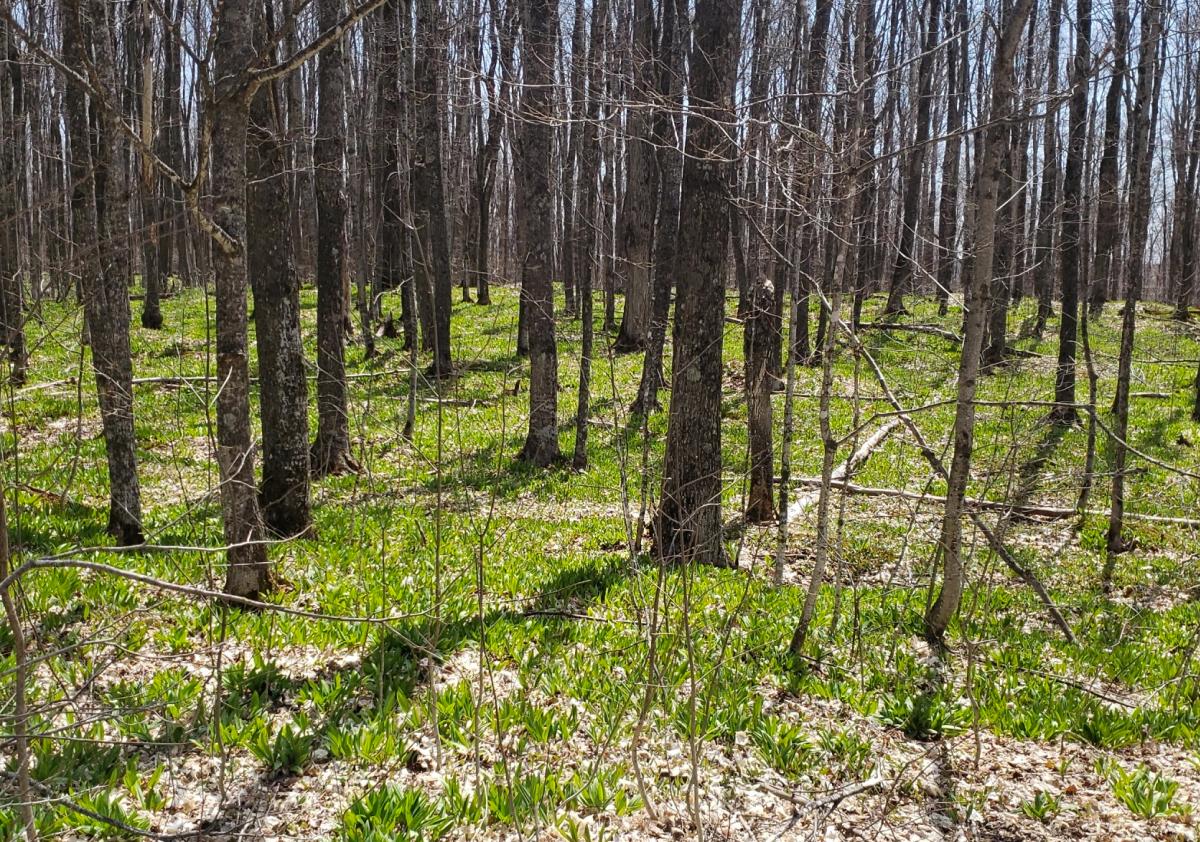
Bright green ramps grow in patches, covering the forest floor.
Mushrooms
Chanterelles, Oyster Mushrooms, Hen-of-the-Woods, and the ever-popular Morel can all be found in the Upper Peninsula during the spring. Some mushrooms grow on trees or logs, while others grow from the ground. You will want to learn more about each type of mushroom and the environments they grow in before you begin your hunt. Cover a lot of ground and don't give up! Bring a field guide with you to help in identification. Double and triple check that you have the right thing and cook all mushrooms thoroughly before eating! Speaking of eating... The Forager Chef is a great resource for learning how to cook and use foraged ingredients in your meals.
Leave Fawns Alone
We begin seeing the arrival of fawns as early as late-April, and foragers will often stumble across these beautiful creatures during their first few days of life. Here's what you need to know... If you find a fawn curled up in the woods, leave it alone! These baby deer have very little scent, protecting them from predators. If you touch the fawn, you may leave your scent and attract predators. Momma deer is usually bedding or feeding nearby, keeping a watchful eye on her babies.
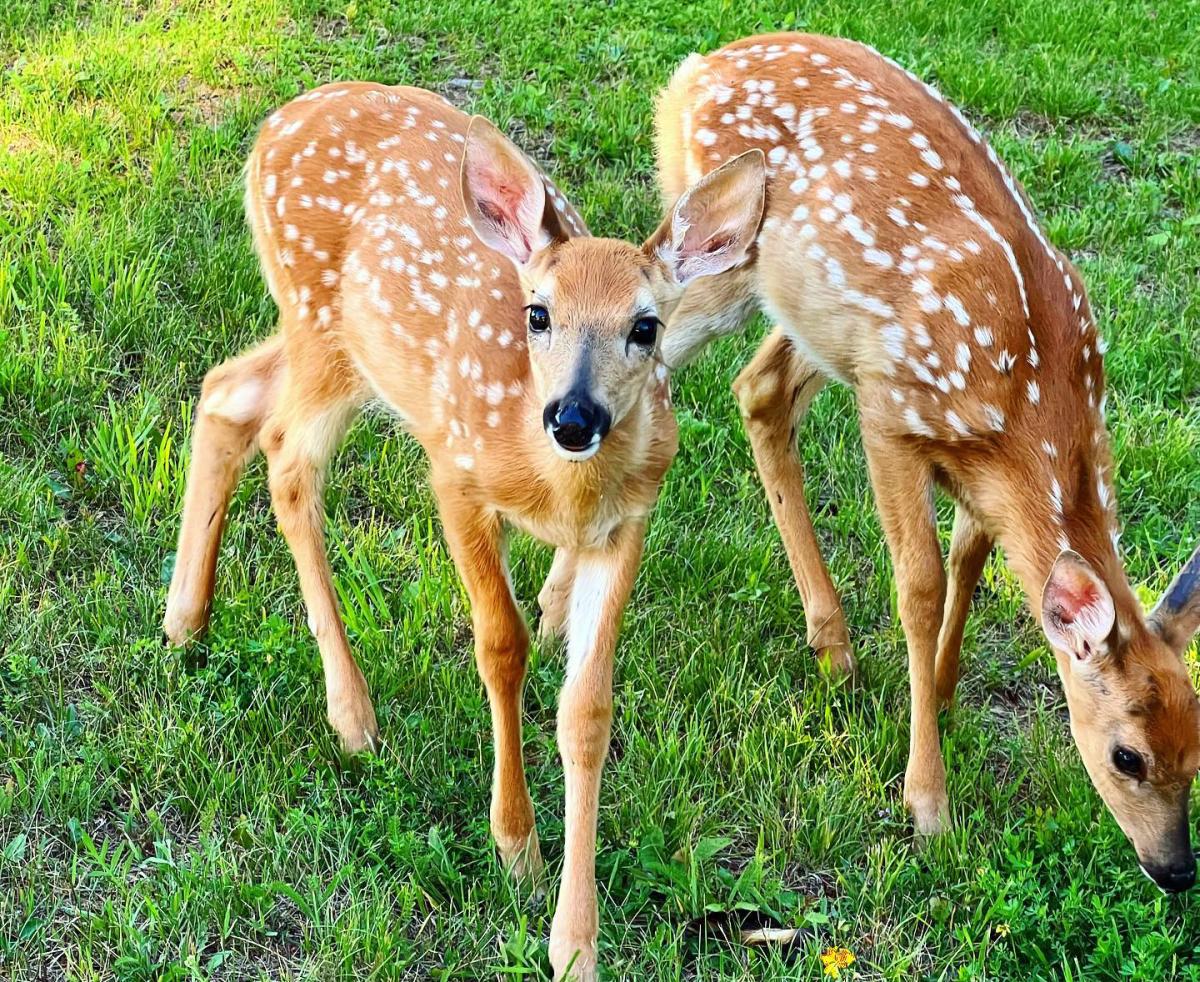
Leave tiny fawns alone in early spring so they can continue to grow. This photo was taken in late July, several months after they were born.
Let an Expert do the Work
Not confident in your foraging skills? That's okay! Some of our local restaurants feature our favorite foraged treats on their menus during the spring! Milly's in Hancock has even been known to feature locally grown mushrooms, ramps, and fiddleheads on their delicious Detroit-style pizza. Or stop by the Keweenaw Co-Op and our local farmers markets to buy some of these locally harvested spring treasures to enjoy when you get home.
Learn About Maple Syrup Production
The Keweenaw is home to thousands of maple trees, and many local farms take advantage of the maples on their property by producing maple syrup. Maple sap can only be collected during the spring when sap flows. Farmers will tap trees during early spring and boil it into that rich syrup that we all love to douse our pancakes with.

Local producers start tapping maple trees in March, boiling syrup until about mid-April.
If you want to learn more about maple syrup production, the Niemela Family Growers offer tours of their sugar shack every day except Sunday during the boiling season. Located on Tapiola Road outside of Chassell, the Niemela's sugar shack is usually open between mid-March and mid-April. Be sure to call ahead before you go to make sure they are boiling! Want to learn more about this sweet treat? Check out our blog by Nathan Invincible!
Go Fishing
As water temperatures begin to warm up and spring melt starts to run, anglers see a lot of biting action in the Keweenaw. If you're not sure where to go or what bait to use, consider booking a trip with one of our local guides.
March - Final Days of Ice Fishing
Ice cover usually reaches its peak in early March but can persist through the end of the month. The increased sunlight and warmer temperatures make this an enjoyable time to get out on the ice and fish. As the ice on Lake Superior starts to recede, anglers turn to the Portage Canal for some good crappie fishing.
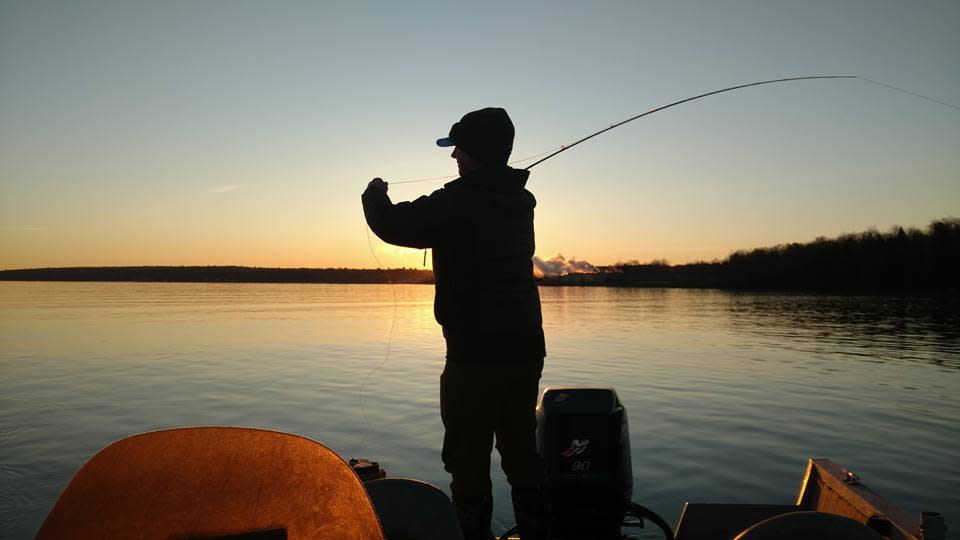
A variety of fish species move near shore to the warmer shallow waters during spring.
Mid April-Late May
Spring fishing truly begins when the ice starts to disappear around boat launches and open water becomes accessible by kayak or boat. During the spring runoff, a variety of fish species tend to concentrate in the warmer shallow waters near shore. Some of the most prominent species caught this time of year are steelhead, splake, coho salmon, and brown trout. It's not uncommon to catch multiple species in one day! The fact that you can catch a different fish species with every bite is what makes springtime fishing in the Keweenaw so epic! It is also common for anglers to catch lake trout and sometimes even the elusive coaster brook trout during this time of year.
Marvel at the Night Sky
The Keweenaw's northern latitude and low light pollution make it possible to see the Northern Lights, Milky Way, and infinite stars. Home to the Keweenaw Dark Sky Park, the only International Dark Sky Park in Michigan's Upper Peninsula, Copper Harbor is the perfect place to take in the night sky.
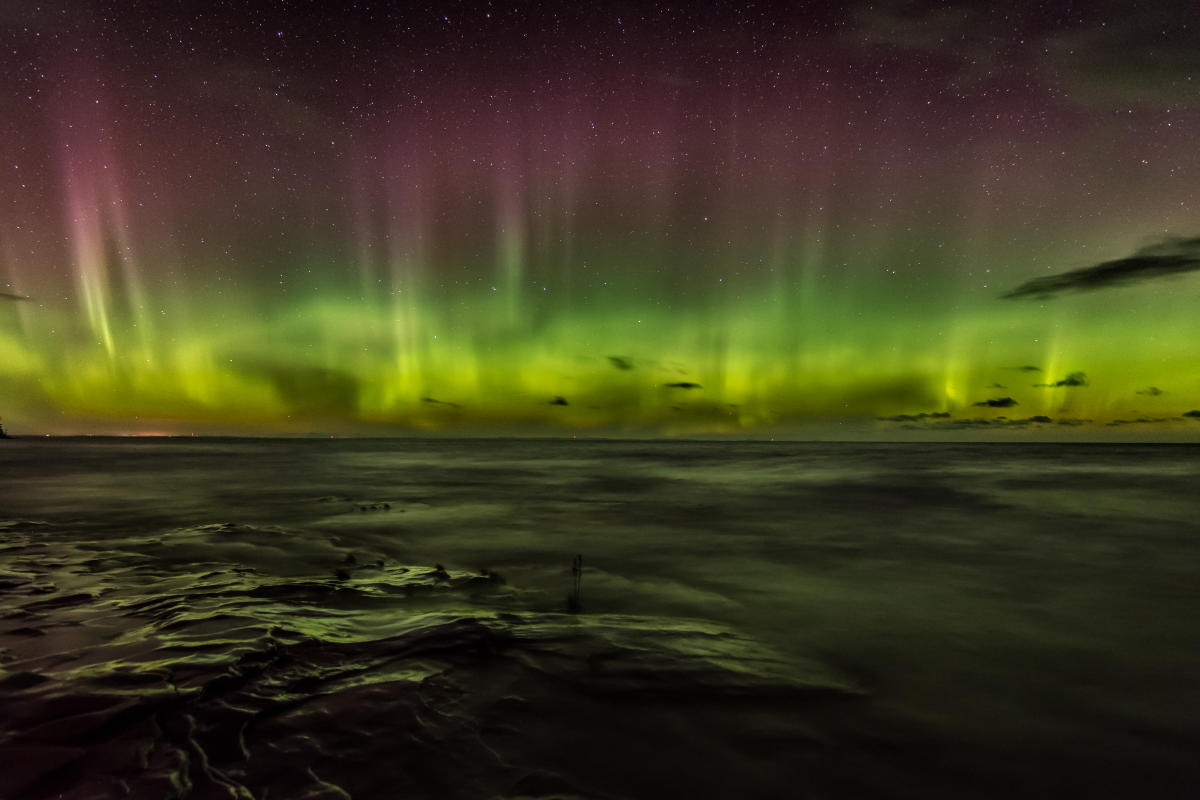
Spring can be a good time to experience northern lights activity at the Keweenaw Dark Sky Park.
Warmer evening temperatures and relatively early sunsets make spring the perfect time to enjoy our dark sky park. Download an Aurora Forecast App to receive alerts when northern lights Activity may be possible.
Spring Events
2023 Upper Peninsula Dark Sky Festival
April 11-23, 2024
Celebrate the night sky and its beauty during the 2024 Upper Peninsula Dark Sky Festival. This special event will include educational workshops about the evolution of the Keweenaw Dark Sky Park, chasing the northern lights, and astrophotography. Enjoy rustic and worldly lunch from the Keweenaw Mountain Lodge and adventure outside for stargazing with the Lodge's Outdoor Activities Center team.
Ride the Keweenaw
May 24-26, 2024
Join us for a family-friendly weekend of great riding in the Keweenaw Peninsula. Starting Friday of Memorial Day Weekend, Ride the Keweenaw celebrates the start of the mountain biking season in the Keweenaw. Take a guided ride through the caverns of Adventure Mine, enjoy a group ride at Michigan Tech Trails, and explore Copper Harbor's world-class trail system during this fun weekend.
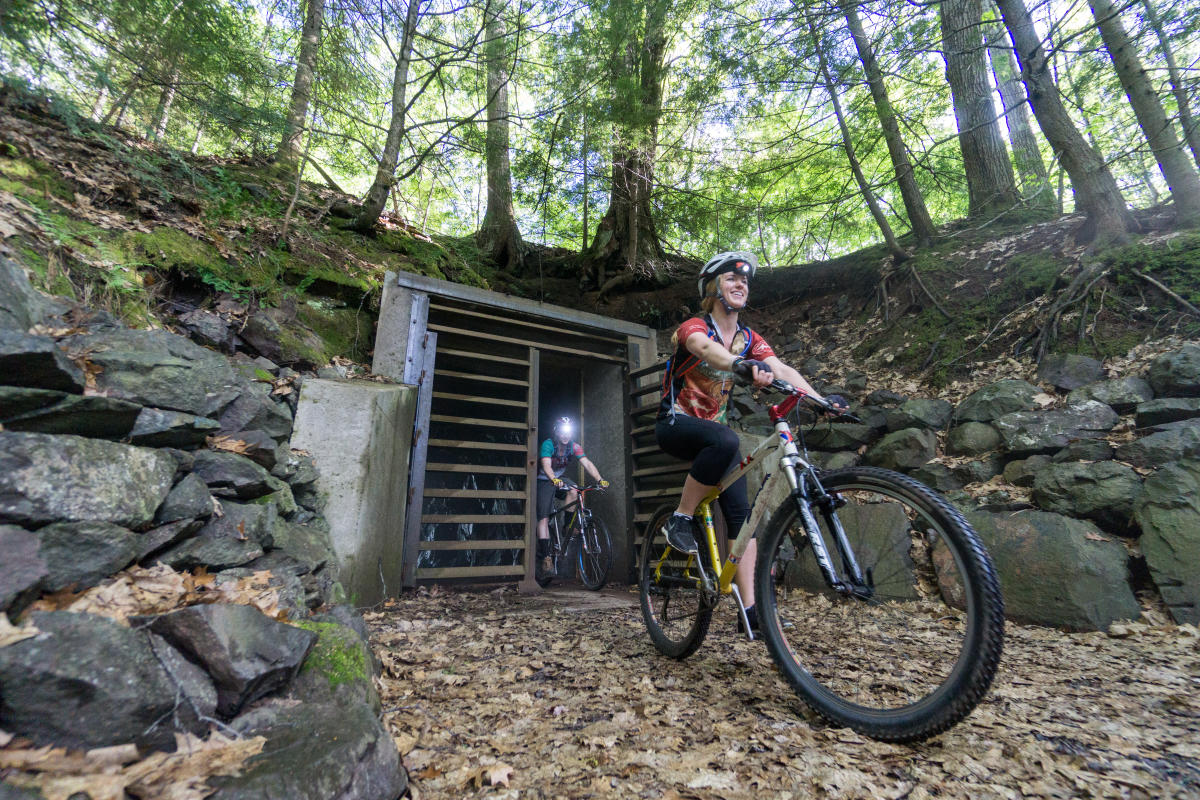
Interested in updates, travel tips and quirky information about the Keweenaw? Just sign up for the Keweenaw Explorer, our monthly e-newsletter. Complete the form…

